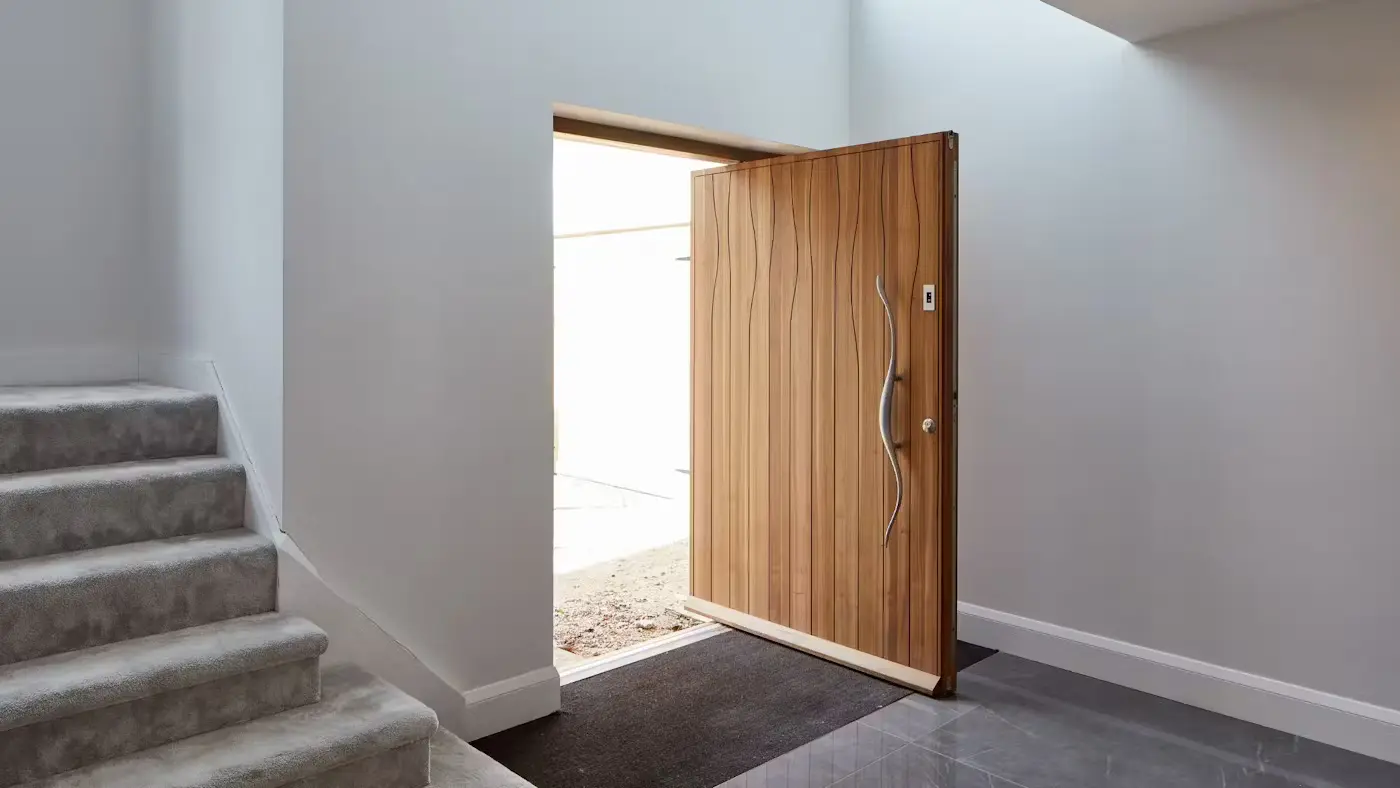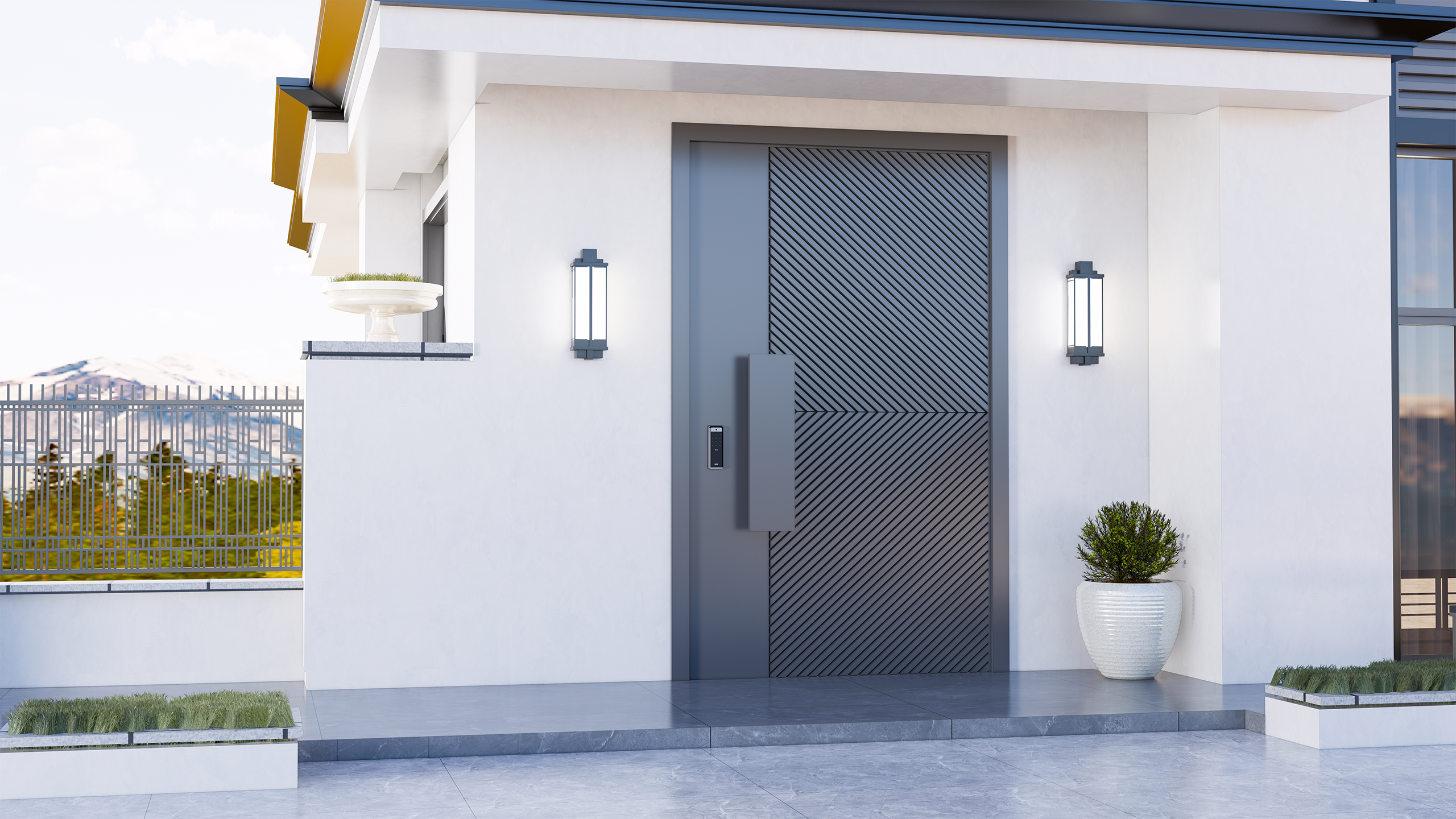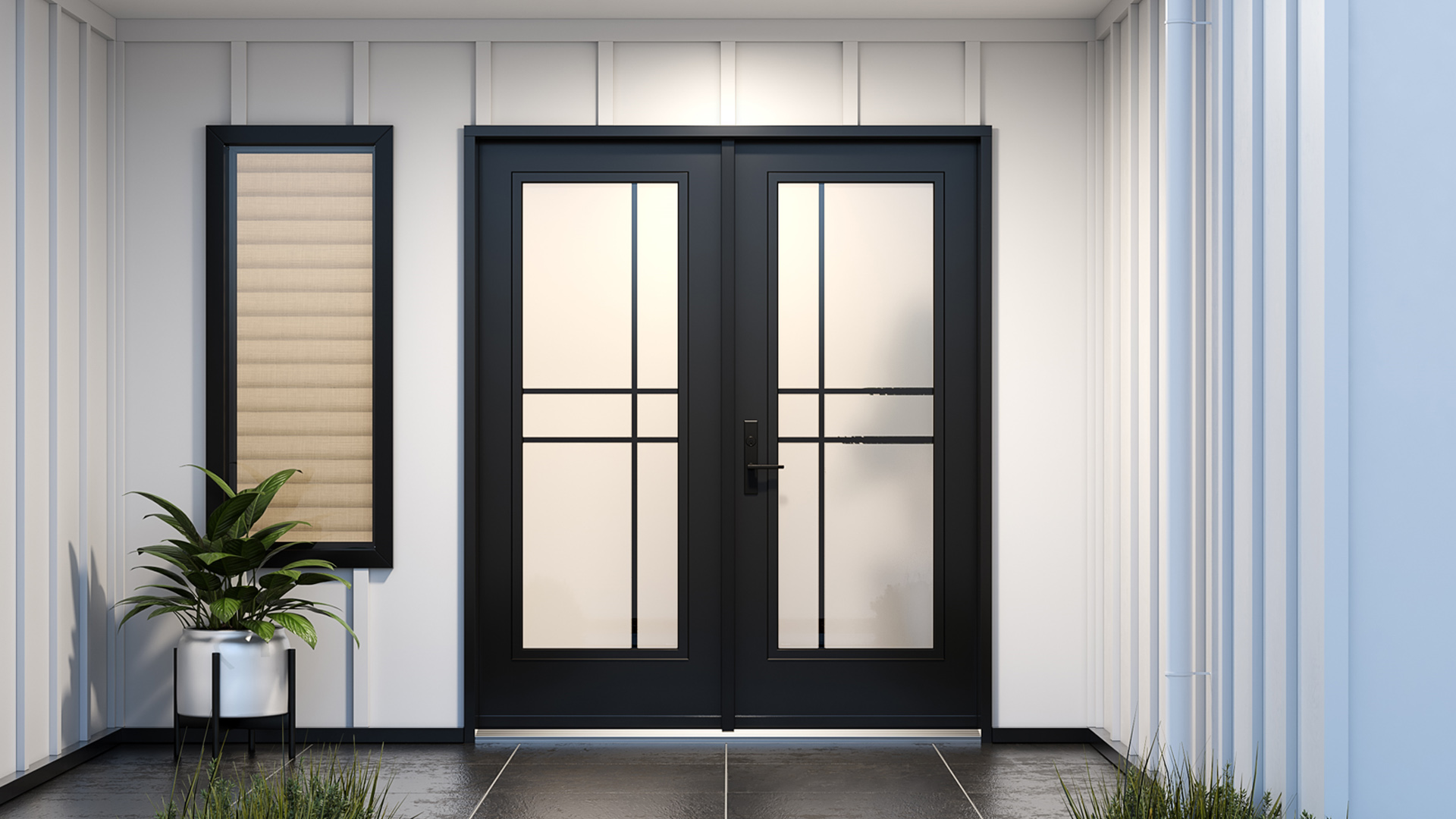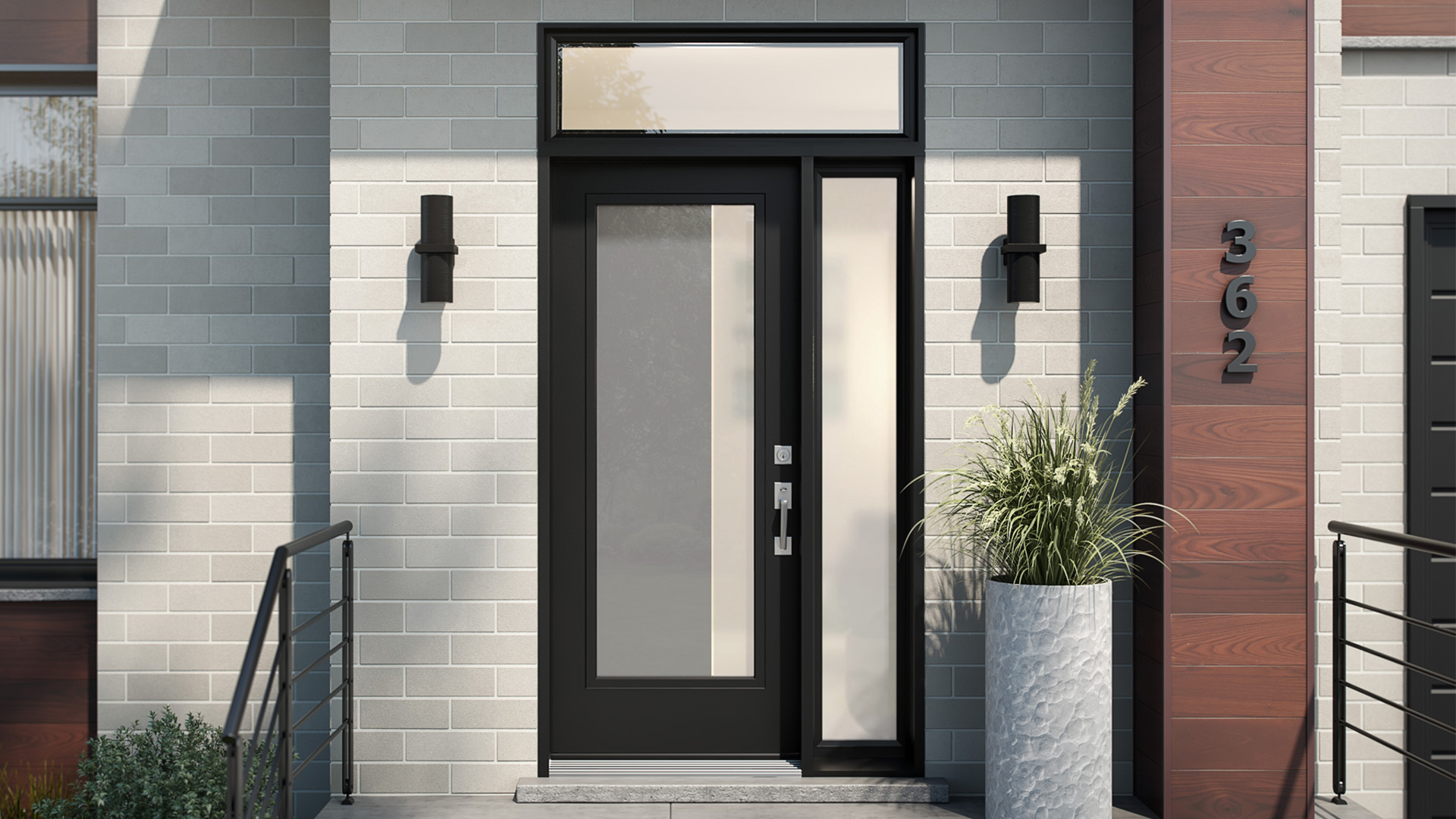How does an invisible door work?
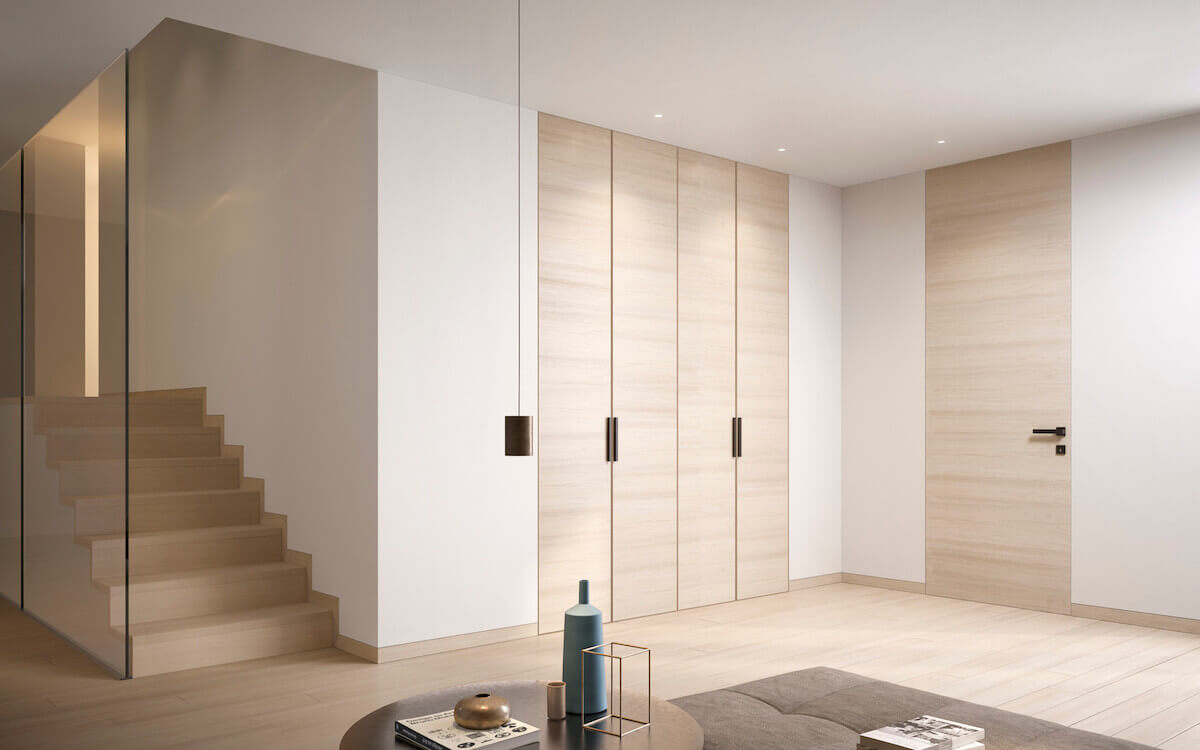
Introduction to Invisible Door
Invisible doors are a groundbreaking solution for modern spaces. They blend seamlessly into walls, creating a clean, sleek look that enhances the design of any room. Unlike traditional interior doors, which are often framed with visible hardware, invisible doors are virtually undetectable. These doors don’t just serve as functional entryways—they also act as a stylish and contemporary design feature.
As we prioritize minimalism and openness in interior design, invisible doors are becoming essential to the modern aesthetic. These doors offer more than just privacy or security; they elevate the entire ambiance of a room.
What is an Invisible Door?
An invisible door is a type of interior door that hides in plain sight. It’s built to blend perfectly with the wall it’s installed on, making it almost invisible. Most invisible doors operate on a hinge or pivot system, with concealed mechanisms that allow the door to open and close without disrupting the room’s design.
The magic behind invisible doors lies in their construction. Instead of traditional door frames and visible hardware, these doors are equipped with hidden hinges and magnetic locks that allow them to be installed flush with the wall. For a closet, bathroom, or even a secret passage, invisible doors are a unique solution that adds sophistication and elegance.
In essence, invisible doors provide all the functionality of a traditional door but with a modern, sleek twist. They are often crafted using high-quality materials such as wood, glass, or metal, depending on the desired style.
How Invisible Doors Are Different from Traditional Doors?
Invisible doors stand apart from traditional interior doors in several key ways. First, traditional doors are typically framed and mounted on visible hinges, making them easy to identify and separate from the walls. In contrast, invisible doors are designed to completely blend with the surrounding wall, using hidden mechanisms that make them nearly impossible to spot.
The hardware of an invisible door is concealed. Instead of showing off door handles or visible hinges, invisible doors feature hidden hinges and sometimes magnetic locks, making them appear as if they are part of the wall itself. This results in a clean, uninterrupted surface that looks like part of the architecture rather than a functional door.
Invisible doors also tend to be more customizable than traditional doors. You can integrate them into walls of different materials, from drywall to wood panels or even glass. Traditional doors, on the other hand, typically have standard materials and sizes, limiting the scope for design creativity.
The Growing Popularity of Invisible Doors in Modern Architecture
The popularity of invisible doors has surged in recent years, mainly due to the shift towards minimalist design in modern architecture. As homeowners and designers seek ways to create open, airy, and clutter-free spaces, invisible doors have become a go-to choice. These doors allow for the uninterrupted flow of space while serving their functional purpose.
Creating an open, seamless environment is more critical than ever in interior design. Invisible doors play a key role in this. By eliminating the visual clutter that comes with traditional door frames, they help create a clean, modern aesthetic that is especially desirable in contemporary homes and offices.
Furthermore, as sustainable and eco-friendly design gains more attention, invisible doors also offer practical benefits. They allow for more energy-efficient layouts by utilizing better sealing technology that reduces air leakage. In this way, invisible doors are a design statement and a functional upgrade.
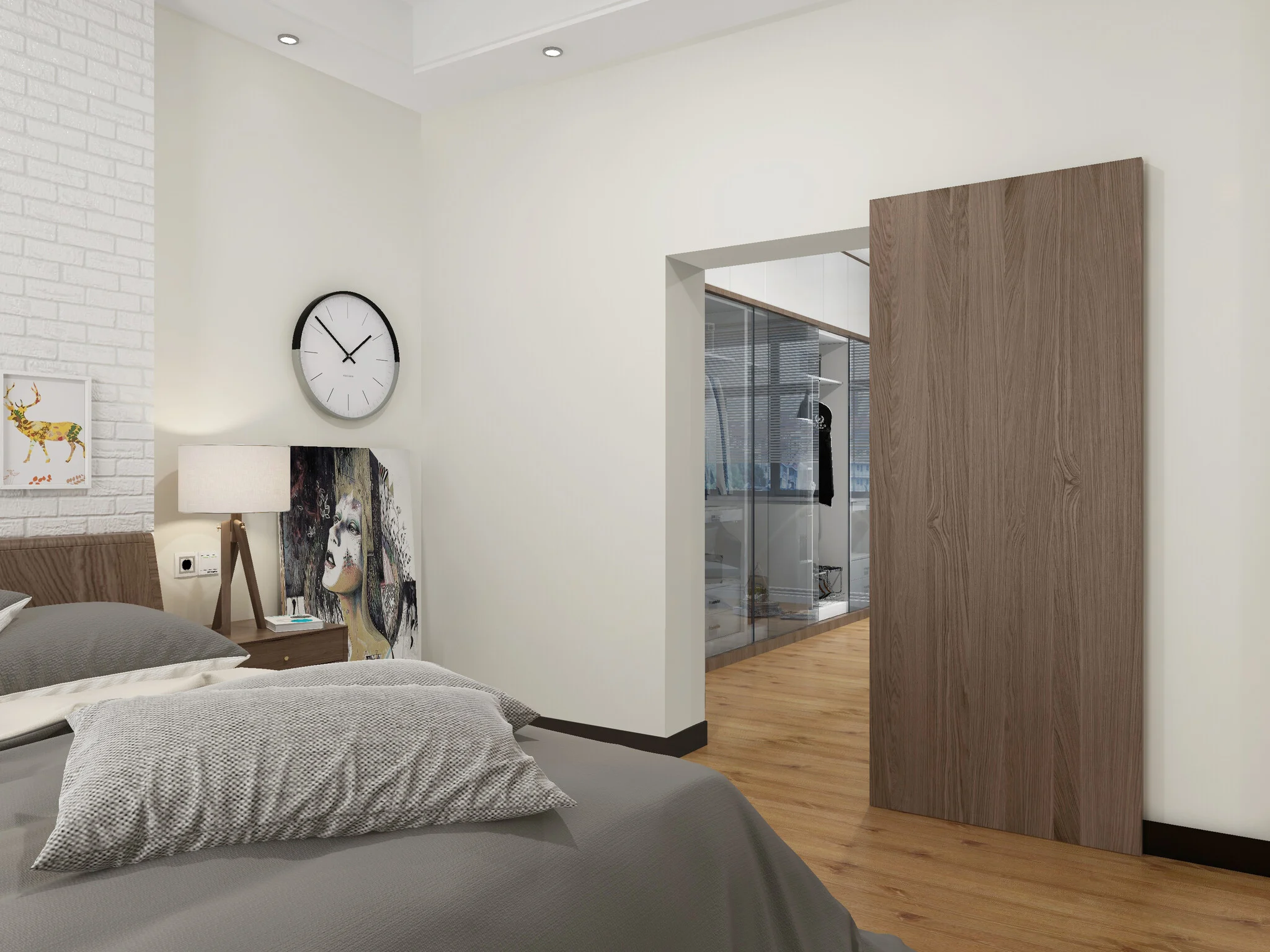
How Does an Invisible Door Work?
Invisible doors may seem like a futuristic design idea, but they work on simple yet clever mechanisms that allow them to blend seamlessly into the walls. Whether you’re looking for a modern interior door solution for your home or office, these doors offer a stylish, functional alternative to traditional options. Here’s a breakdown of how they work and what makes them unique.
The Basic Mechanism of Invisible Doors
Invisible doors are designed to blend into their surroundings, often looking like part of the wall. The key to their function lies in opening and closing without visible hardware. These doors typically operate using hidden hinges and specialized locking systems.
The basic mechanism involves concealed pivots or hinges mounted within the wall or door frame itself. When you push or pull the door, the mechanism allows it to open smoothly, like a regular door. However, the hinges and any hardware are hidden from sight, making the door appear as though it is part of the wall.
In some cases, invisible doors use magnetic locks that hold the door in place and release with a simple push or sensor. The benefit here is that you don’t have any bulky handles or knobs, which can disrupt the seamless look of the interior space.
Integration with Walls: How Seamless Design Is Achieved
One of the main appeals of invisible doors is their seamless integration with the wall. Unlike traditional interior doors with visible frames and hinges, invisible doors are designed to blend completely into the wall. To achieve this, the door is often covered with the same material as the surrounding wall, whether drywall, wood paneling, or glass.
The process begins during installation, where the door is set into the wall frame and aligned perfectly with the surface. The edge of the door is hidden using the same finish as the wall, and the surrounding area is carefully constructed to ensure a smooth transition. This means there are no noticeable gaps, seams, or hardware around the door, giving it a clean, uninterrupted look.
Additionally, many invisible doors are painted or textured to match the rest of the room, further enhancing their “invisibility.” With this seamless design, you can maintain a minimalist look in your interior while still having a fully functional door.
Types of Invisible Door Systems (Pivot, Sliding, Swinging)
Invisible doors come in several systems, each offering different benefits depending on your needs. The most common types are pivot, sliding, and swinging systems.
- Pivot Doors: These are the most popular choice for invisible doors. Instead of the traditional hinge, a pivot door swings open from a single central point, often with no visible hardware. This design allows large, wide doors to open smoothly and gracefully, even in tighter spaces.
- Sliding Doors: Invisible sliding doors operate on tracks hidden within the wall, making them an excellent option for spaces where a swinging door might be too bulky. These doors move horizontally, often with minimal effort, and are great for conserving space in smaller rooms. Since there are no hinges or visible handles, they provide a seamless appearance.
- Swinging Doors: A more traditional choice, swinging invisible doors work just like any other door, but with the added benefit of hidden mechanisms. These doors can open outward or inward, and concealed hinges can flush the door with the wall when closed. They work well in spaces where a full swing path is needed.
The Role of Hidden Hinges and Mechanisms
The hidden hinges and mechanisms truly set invisible doors apart from traditional ones. In an interior door, hinges are typically visible, connecting the door to the frame and allowing it to swing open. However, in an invisible door, these hinges are hidden within the wall or behind the door itself.
Hidden hinges work by being mounted within the door frame, which allows the door to rotate around a concealed pivot point. This makes it virtually impossible to see any hardware unless you open the door. Some invisible doors even use magnetic systems, where the door is held in place by magnets that hold it flush against the wall until it’s pushed open.
In addition to hinges, the locking mechanisms in invisible doors are also often hidden. Magnetic locks, for example, ensure the door stays in place when closed but releases with a simple push or touch. This creates a smooth, effortless experience for the user without compromising the sleek, hidden design of the door.
By eliminating visible hinges and hardware, invisible doors maintain a clean, seamless appearance while still providing all the functionality you expect from any interior door.
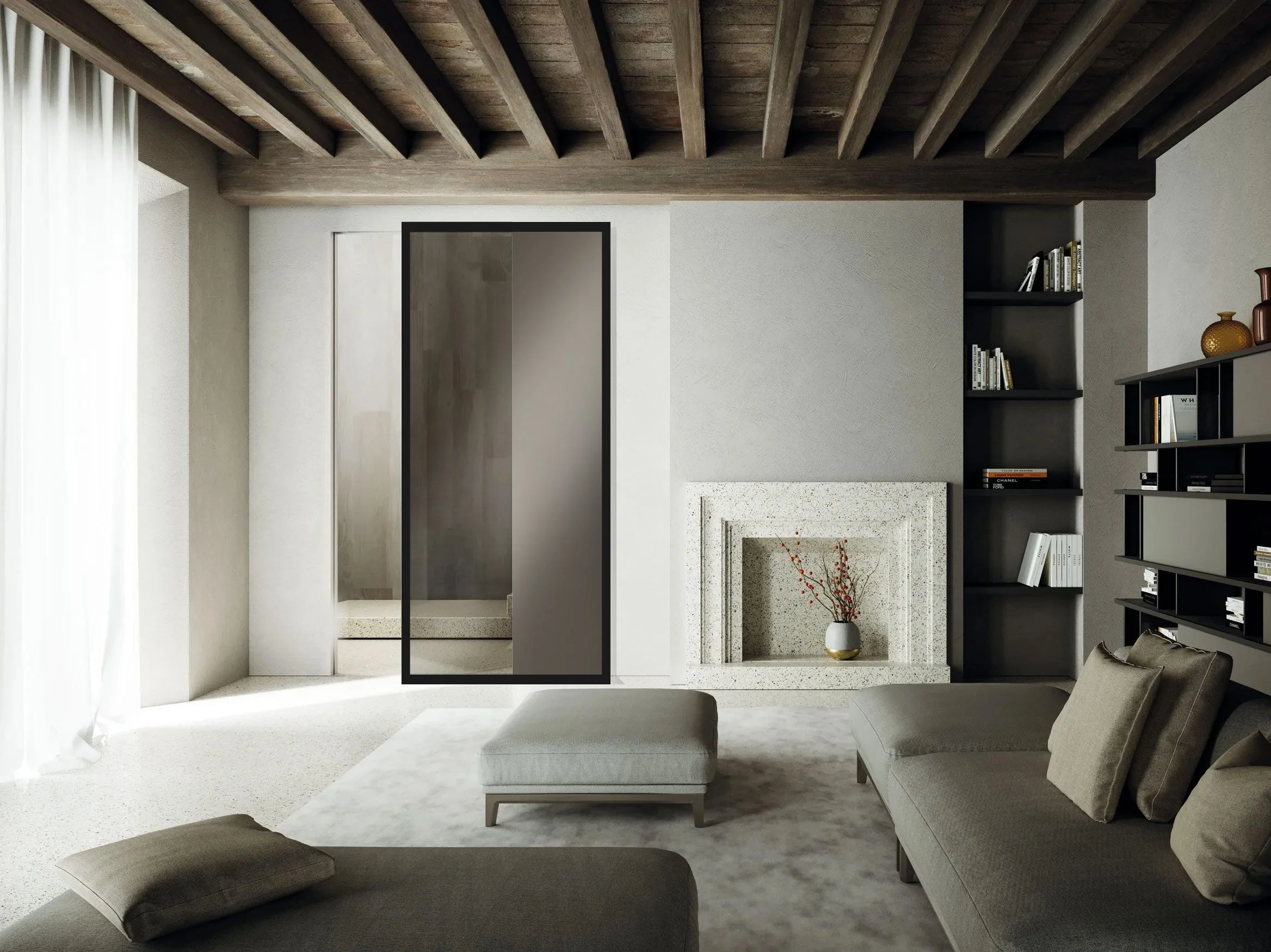
The Technology Behind Invisible Doors
Invisible doors are not just about aesthetics; they incorporate advanced technology to make them functional, durable, and easy to use. From concealed hinges to sensors and soundproofing, several technical elements work together to ensure these interior doors function smoothly while maintaining a sleek and minimalist look.
Concealed Hinges: What Makes Them Special?
Concealed hinges are at the heart of what makes invisible doors so unique. Unlike traditional interior doors, where hinges are visible, concealed hinges are hidden within the door. These hinges are installed in a way that allows the door to swing open smoothly while remaining almost invisible to the eye when closed.
What makes concealed hinges special is their ability to provide a strong, durable hold without compromising the door’s design. They allow the door to open and close quietly and effortlessly while completely flush with the wall or frame. The mechanism is hidden within the door or the surrounding wall so that invisible doors can maintain that seamless, uninterrupted look.
These hinges come in different configurations, such as pivot or continuous. Still, they all serve the same purpose: ensuring that the door operates smoothly without distracting from the minimalist design of the space. Concealed hinges are a key feature for those looking to create a clean, modern interior.
Magnetic Locks: How Do They Function?
Magnetic locks are popular for invisible doors because they offer a secure, easy-to-use locking mechanism while keeping the design sleek and unobtrusive. These locks use magnets to hold the door when closed, providing a strong, silent seal without the need for bulky handles or visible latches.
The magnetic lock disengages when you push the door, allowing it to open easily. The lock then re-engages automatically when the door closes, creating a secure seal without any visible hardware. This makes magnetic locks an ideal solution for invisible doors, as they help maintain the door’s minimalist appearance while offering traditional locks’ security and functionality.
One of the key advantages of magnetic locks is their ability to work without physical contact. Unlike traditional mechanical locks, the magnetism ensures a secure hold without wear and tear, which can become loose or damaged over time.
Sensors and Automatic Opening Systems
Invisible doors often integrate sensors and automatic opening systems for convenience and a futuristic touch. These systems use motion detectors, pressure sensors, or touch sensors to detect when someone approaches the door, allowing it to open automatically without any physical interaction.
For example, a simple infrared sensor can detect motion near the door, triggering it to open without the need to touch a handle. In more advanced systems, the door may open automatically when it detects someone approaching or when pressure is applied to a specific area, like the door’s edge. This makes invisible doors not just seamless in design, but also highly functional in modern living spaces.
These automatic opening systems are beneficial in high-traffic areas where you must pass through doors hands-free, such as in offices, hospitals, or kitchens. They enhance convenience while maintaining the door’s clean, minimalist look.
Soundproofing and Insulation Considerations for Invisible Door
Regarding invisible doors, soundproofing and insulation are just as important as their sleek appearance. These doors are often installed in spaces that require privacy and noise reduction, such as home offices, bedrooms, or recording studios. To achieve this, invisible doors must be designed to minimize sound transmission and provide adequate insulation.
The materials used in constructing invisible doors play a crucial role in soundproofing. For example, solid-core doors or doors with specialized acoustic panels block out external noise. The edges of the door are also sealed with weatherstripping or rubber gaskets, ensuring that sound doesn’t leak through gaps when the door is closed.
Additionally, invisible doors can be insulated to help maintain temperature control within a room. The same materials that block noise can also help prevent heat loss or gain, making invisible doors an excellent option for improving energy efficiency in the home or office. Whether you’re trying to keep your home quiet or ensure better climate control, soundproofing and insulation are essential features of invisible doors.
By integrating these features, invisible doors provide both a functional and aesthetic upgrade to any space, ensuring that they meet the practical needs of modern living while maintaining their seamless, clean look.
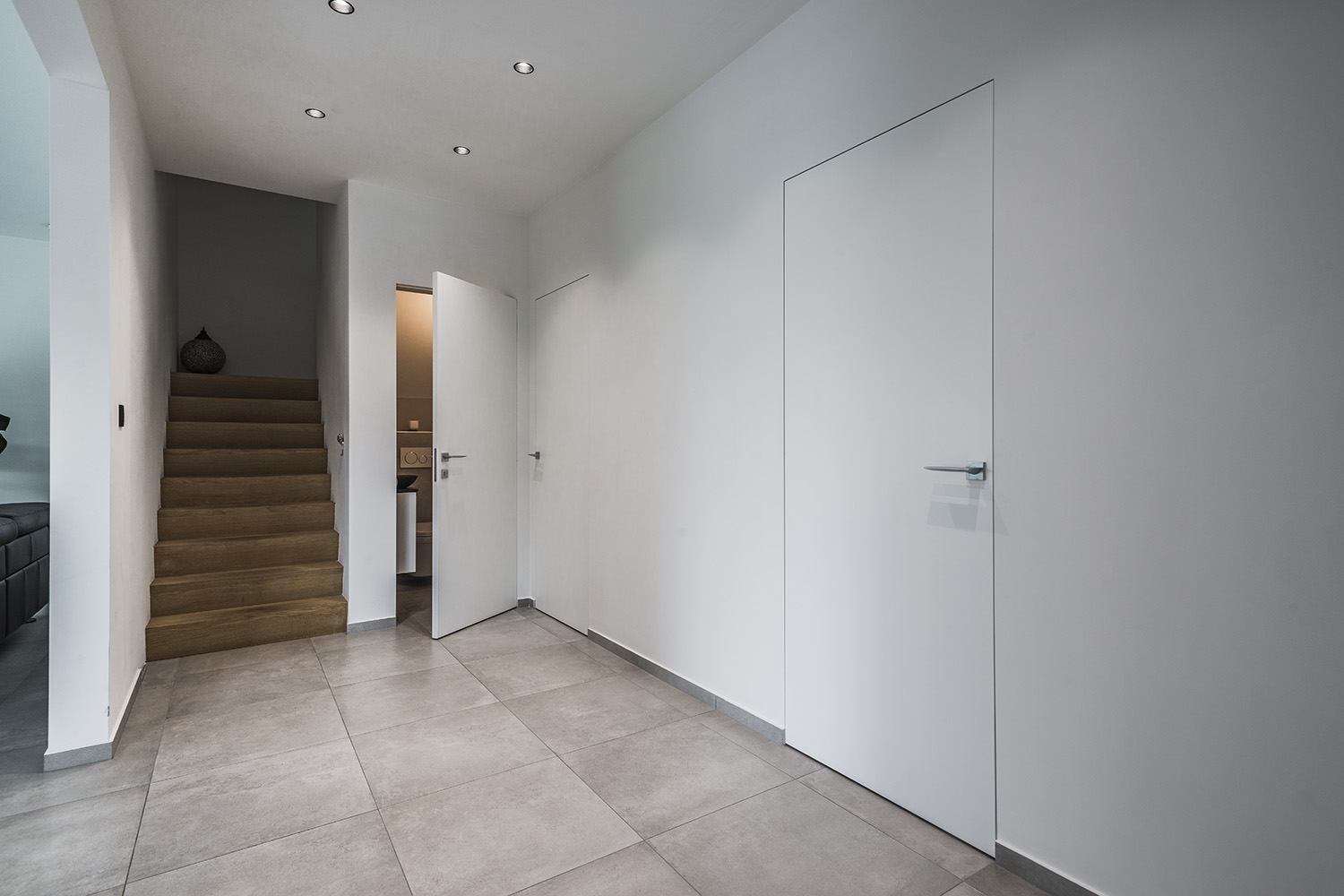
Benefits of Installing an Invisible Door
Invisible doors are not just a passing trend—they offer numerous benefits beyond aesthetics. These modern interior doors are increasingly popular because they bring a range of advantages to homes and offices alike. From design flexibility to increased security, installing an invisible door can transform any space. Here are some key benefits to consider.
Aesthetic Appeal: Why Invisible Doors Are a Designer’s Choice
Invisible doors are quickly becoming a favorite among interior designers. Their clean, minimalist appearance makes them an ideal choice for anyone looking to create a sophisticated, contemporary interior. Unlike traditional interior doors, which often draw attention with visible handles and frames, invisible doors allow for a seamless design.
When properly installed, invisible doors blend into the surrounding walls, becoming nearly invisible. This creates a sleek, modern look that is highly sought after in residential and commercial spaces. Whether it’s a luxury home, office, or hotel, invisible doors help maintain the flow of space without disrupting the visual harmony of the room.
Moreover, invisible doors can be customized to match any interior style. Whether you want a wood finish that complements your living room décor or a glass panel that fits a modern office design, these doors can be tailored to suit your aesthetic preferences, making them the perfect choice for any space.
Maximizing Space and Light in Interior Design
One of the most appealing benefits of invisible doors is their ability to maximize space and light. Traditional doors with bulky frames and hardware can interrupt the flow of a room, especially in smaller spaces. Invisible doors, however, create an open and airy environment by eliminating the need for visible door frames.
Without the distraction of a visible door, the room feels larger and more spacious. Invisible doors also help maximize natural light by allowing light to flow freely between rooms. Since the door blends with the wall, no dark frames or door handles block the light flow. This makes invisible doors an excellent choice for rooms that need to feel open and well-lit, such as living rooms, kitchens, and bedrooms.
For those with limited space, invisible sliding doors can save valuable square footage. These doors slide open along a hidden track, making them ideal for spaces where a traditional swinging door would take up too much room.
Increasing Property Value with Invisible Door
Invisible doors aren’t just a style statement—they can also increase the value of your property. As more homeowners and architects embrace minimalist design, incorporating invisible doors can make a property stand out in the market. Their sleek, modern aesthetic is highly appealing to buyers looking for a stylish and functional home.
In addition to their visual appeal, invisible doors can improve the overall functionality of a space. These doors enhance the home’s flow by creating a more open layout and maximizing light. Homes with clever, space-saving designs are often valued higher in the real estate market. As invisible doors grow in popularity, they become desirable for prospective buyers.
Even for commercial properties, such as offices or hotels, invisible doors can add a touch of luxury and elegance, setting a business apart from competitors. Whether you’re renovating or building a new space, investing in invisible doors could be a wise decision when boosting property value.
Privacy and Security in Invisible Doors: Myths vs. Facts
Some people are concerned about privacy and security when it comes to invisible doors. After all, these doors don’t have traditional locks or visible handles. However, these concerns are often based on myths, not facts.
Myth 1: Invisible Doors Are Less Secure Than Traditional Doors
Invisible doors have advanced security features that make them just as secure as traditional doors. Many doors use hidden magnetic locks that provide a strong, secure seal when the door is closed. In some cases, the magnetic locks can only be released with a specific key or code, ensuring only authorized individuals can access the space.
Myth 2: Invisible Doors Don’t Offer Privacy
Invisible doors can be equipped with soundproofing and insulation features, ensuring they provide the same level of privacy as traditional doors. These doors are often made with solid cores or acoustic materials, blocking sound from traveling between rooms. Whether you need privacy in a bedroom, home office, or bathroom, invisible doors can help create a quiet, private space.
Fact: Invisible Doors Provide Both Privacy and Security
In reality, invisible doors offer excellent privacy and security. They can be as secure and functional as traditional interior doors while providing a sleek, minimalist design. With hidden hinges, magnetic locks, and soundproofing, these doors are fully equipped to meet the demands of modern living.
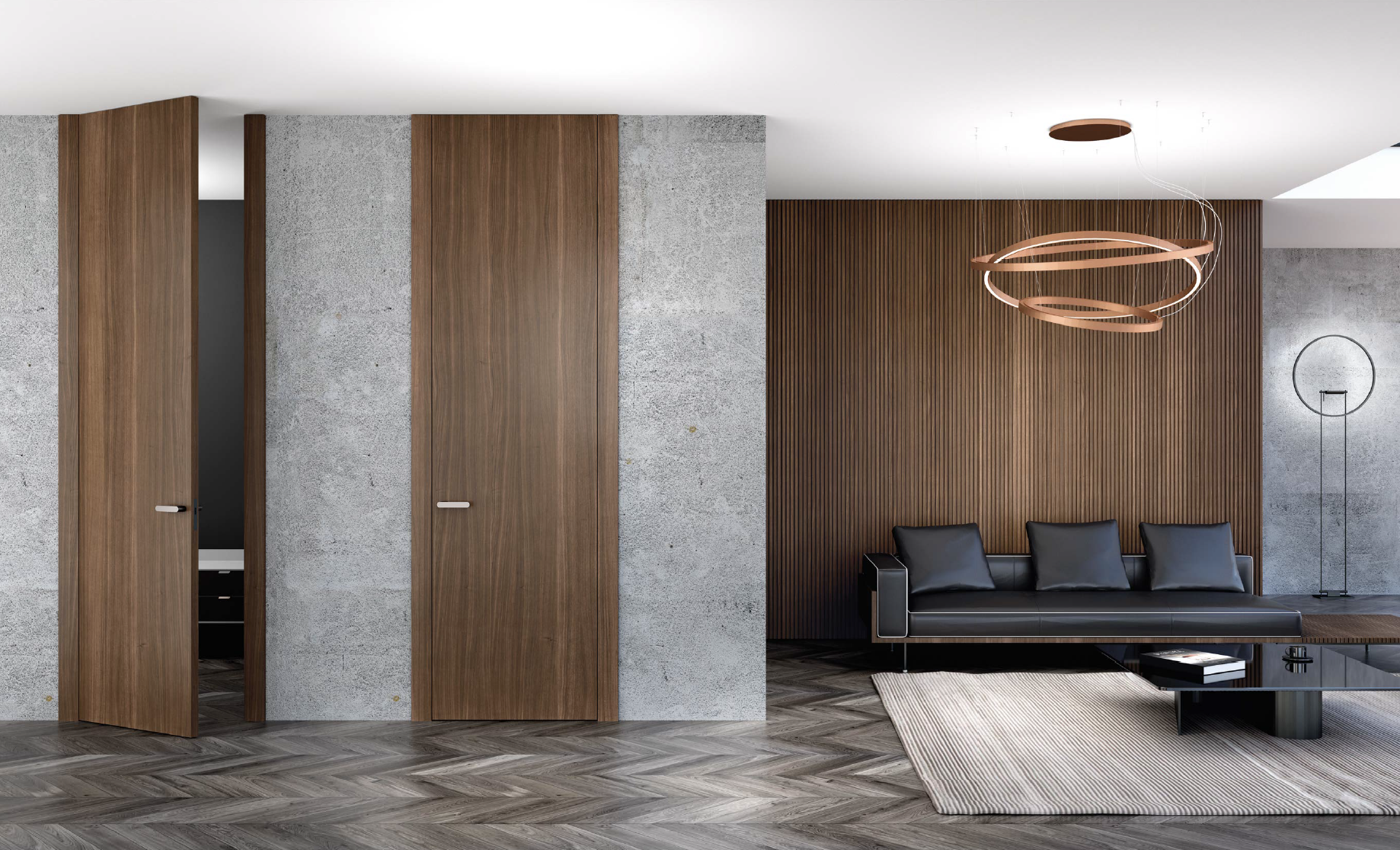
Invisible Door in Different Environments
Invisible doors are a versatile design element that can be used in various environments, each benefiting from the sleek, seamless look they offer. Whether in a home, office, or commercial space, invisible doors elevate the aesthetic and functionality of any setting. Here’s how they work in different spaces:
Invisible Door for Homes
Invisible doors are perfect for modern homes that prioritize open, spacious, and minimalist designs. In a house, these interior doors offer a way to integrate functionality without disrupting the visual flow of a room. Since they blend seamlessly with the surrounding walls, invisible doors help maintain the clean lines central to contemporary interior design.
For example, in a living room or dining area, an invisible door can lead to a hallway, closet, or even a secret room, without removing the room’s aesthetic. The door can be designed to match the wall’s color and texture, making it almost invisible when closed. This creates a sense of space and openness that traditional doors can’t provide.
Invisible doors are also helpful in areas where space is limited. For instance, a sliding invisible door in a small apartment can separate a kitchen from the living room without the bulk of a traditional door. This not only saves space but also adds to the lightness and airiness of the space.
Whether for a master bedroom, a private office, or a luxury bathroom, invisible doors provide a stylish solution that ensures your home feels cohesive and clutter-free.
Invisible Door in Offices
In office environments, invisible doors offer a unique way to combine functionality with professionalism. These doors help create sleek, modern offices, emphasising efficiency and clean design. In open-plan spaces or private meeting rooms, invisible doors allow for privacy and separation without compromising the minimalist aesthetic.
An invisible door can be used to separate workstations, meeting rooms, or even to create hidden storage spaces. Their seamless integration into the wall ensures the office looks neat, helping eliminate the visual clutter that traditional doors may cause. For example, an invisible door that blends with the surrounding wall in a minimalist office can make the room feel more expansive and less boxy.
Invisible doors are also practical in offices with modern designs emphasising transparency and open communication. A transparent glass invisible door can separate two areas, allowing light to flow through, creating a bright and open atmosphere. An invisible door can also reflect the cutting-edge, creative environment in offices where design is crucial to the company’s image, such as design studios, tech startups, or luxury brand headquarters.
Invisible Door in Commercial and Public Spaces
Invisible doors are not limited to private homes or offices. They can also play a significant role in commercial and public spaces, enhancing the architecture and flow of these areas. From hotels to museums, invisible doors create a polished, sophisticated atmosphere that elevates the visitor experience.
In commercial spaces, invisible doors can be used to discreetly divide areas, providing privacy without the visual clutter of traditional doors. For instance, in a boutique hotel, an invisible door may lead to a private lounge or a VIP suite. These doors help keep the focus on the design of the space, rather than on the functional elements like doors and hardware.
Invisible doors are also increasingly used in high-end retail environments, such as luxury stores or showrooms, where design plays a central role in the brand’s identity. A door that blends seamlessly with the store’s interior can create a more immersive shopping experience for customers. Additionally, in museums or galleries, invisible doors can be used to separate different exhibition rooms, maintaining the continuity of the space without distracting from the art or displays.
In public spaces such as airports or conference centers, invisible doors can serve practical purposes without disrupting traffic flow. They provide easy access to different zones or service areas while maintaining a clean, professional look.

Choosing the Right Invisible Door for Your Space
When deciding on an invisible door for your home, office, or commercial space, choosing the right one to suit your needs is important. Invisible doors aren’t a one-size-fits-all solution, and several factors must be considered. From the materials used to the door mechanism, making the right choice can ensure that the door enhances your space functionally and aesthetically.
Factors to Consider Before Installing an Invisible Door
Before installing an invisible door, it’s important to consider several key factors that will affect its look and functionality. These include the space’s size, the room’s layout, the type of wall material, and how much privacy or security you need.
First, measure your space carefully. Invisible doors work best in rooms with a clean, minimalist layout. They can fit into various sized rooms, but it’s important that the surrounding space can accommodate the size and mechanism of the door. For example, if you’re planning to install a sliding invisible door, you must ensure there’s enough room along the wall to slide open easily.
Next, think about the type of room you’re working with. A pivot or sliding door may be more suitable for high-traffic areas like hallways. For spaces that need to be divided, such as home offices or bedrooms, an invisible door that blends into the wall could provide the privacy you need without interrupting the room’s flow.
The wall material is another consideration. Invisible doors work best when installed in walls that can be seamlessly blended. Drywall, wood paneling, or even glass walls can all be used with invisible doors, but the type of material will affect how the door integrates with the surrounding design.
Finally, think about how often you’ll use the door and whether it needs to provide extra privacy or security. Some invisible doors can be equipped with soundproofing or security features like magnetic locks, which might be important in offices or bedrooms.
Materials Used for Invisible Door
When selecting an invisible door, your material can significantly impact its look and performance. Invisible doors are made from various materials, including wood, glass, and even metal, and each material offers its unique advantages.
- Wood: Wood is a classic choice for invisible doors. It provides a warm, natural look that blends beautifully with any décor. Solid wood or wood veneers are commonly used for these doors, allowing them to blend seamlessly with the surrounding wall. Wood is also durable and can be customized with various finishes to match the rest of your interior design.
- Glass: Invisible doors are perfect for spaces requiring transparency and light flow. These doors are often used in offices, modern homes, or commercial spaces where visibility and openness are priorities. They can be frosted for privacy or clear for an open look. Glass doors also make a room feel larger and brighter, making them ideal for smaller spaces or areas that need more natural light.
- Metal: For a more industrial or contemporary feel, metal invisible doors offer a sleek, modern look. These doors can be made from aluminum or steel and customized with various finishes, such as matte or polished. Metal doors are strong and durable, making them an excellent option for high-traffic areas or spaces that require additional security.
Finding the Right Invisible Door Mechanism for Your Needs
Choosing the right mechanism for your invisible door is essential for ensuring it functions properly and fits seamlessly into your space. Invisible doors come in several mechanisms, each designed for different needs.
- Pivot Doors: Pivot doors are the most common for invisible doors. They rotate around a central point and can be installed without visible hinges. This door type is ideal for larger openings and can be customized to suit any interior style. Pivot doors work especially well in modern homes and offices, providing a sleek, contemporary feel.
- Sliding Doors: Invisible sliding doors are a great space-saving solution. They slide open along hidden tracks, making them perfect for rooms where a swinging door would take up too much space. Sliding doors are often used in kitchens, closets, and smaller areas. These doors can be large or small, depending on the layout of the space.
- Swinging Doors: Invisible swinging doors operate like traditional doors but use hidden hinges and hardware. They swing open inward or outward and are often used in private rooms or bathrooms. These doors are great if you need one that opens fully and doesn’t slide or pivot.
Cost Considerations: What You Need to Know
While invisible doors are an investment in your home or office’s aesthetic, it’s important to consider the costs before deciding. Invisible doors are more expensive than traditional ones, as they require specialized materials, mechanisms, and custom installation.
The cost of an invisible door depends on several factors, including the material (wood, glass, metal), the type of mechanism (pivot, sliding, swinging), and the complexity of the installation. For instance, custom sliding invisible doors may cost more due to the need for precise installation and high-quality materials. The size of the door and the wall material can also influence the overall price.
While the upfront cost may be higher, invisible doors can add significant value to your property, making them a worthwhile investment. They’re particularly beneficial in spaces requiring a seamless, modern design, and they can help increase any room’s functionality and aesthetic appeal.
When planning your budget, also consider the long-term benefits—an invisible door can increase the value of your property and enhance the overall design of your home or office, making it a smart choice for those looking to elevate their space.
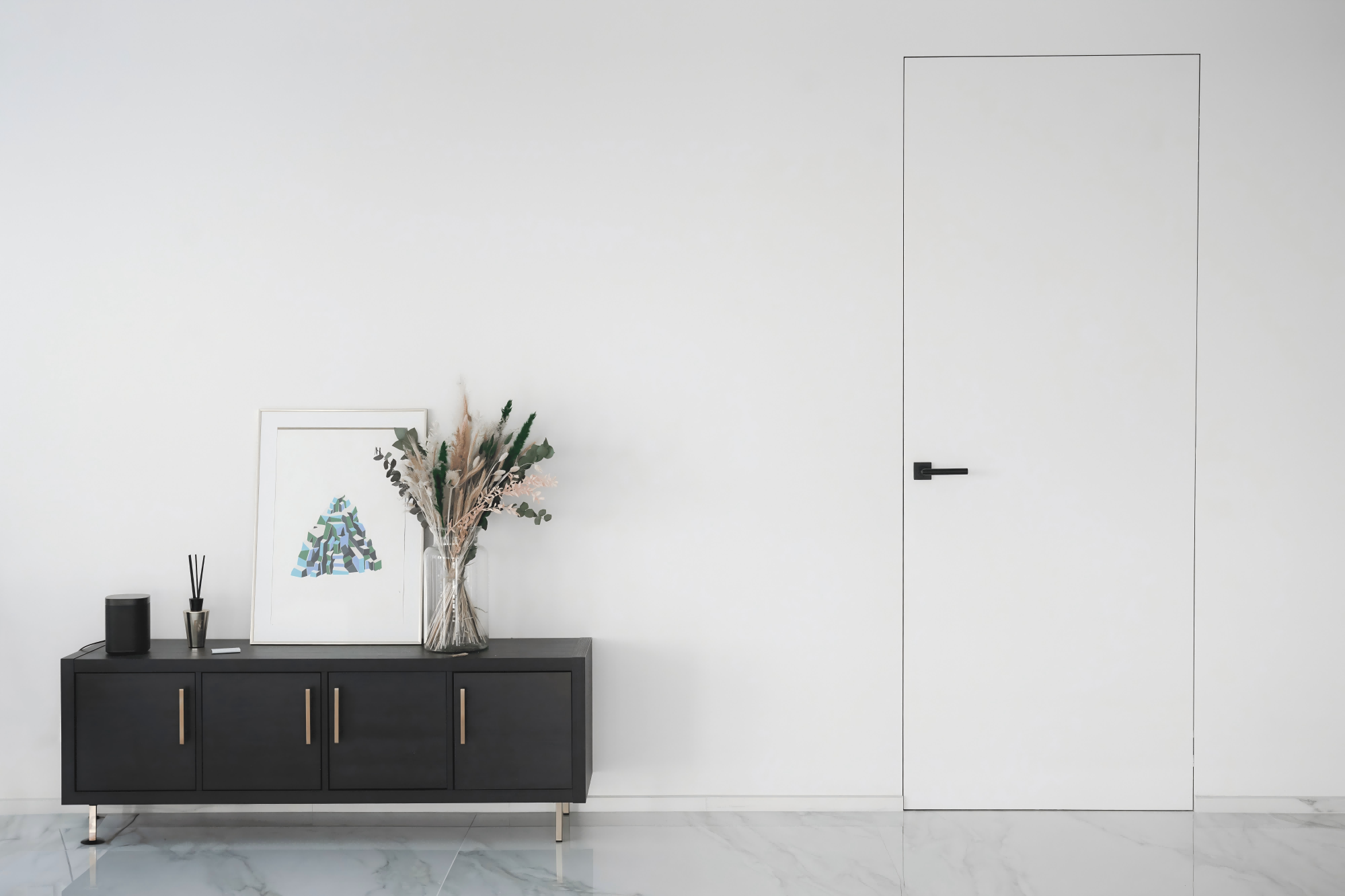
Maintenance and Care for Invisible Door
Invisible doors offer a sleek, modern design that fits seamlessly into any space. However, just like any other interior door, they require regular maintenance to keep them functioning properly and looking their best. Whether you have a wood, glass, or metal invisible door, maintaining it is essential to ensure longevity and smooth operation.
How to Keep Your Invisible Door in Top Condition?
Keeping your invisible door in top condition involves regular care, cleaning, and checking for performance issues. Here’s how you can maintain your invisible door:
1. Regular Cleaning:
Invisible doors, especially those made from glass or wood, should be cleaned regularly to remove dust, dirt, and fingerprints. Use a gentle glass cleaner and a soft cloth to avoid scratches on invisible glass doors. For wooden doors, a damp cloth is enough to wipe off dust. Be sure to avoid harsh chemicals that could damage the finish.
2. Check for Smooth Operation:
Periodically check that the door opens and closes smoothly. If you notice any resistance, it could indicate an issue with the hinges or tracks. You can lubricate the hinges with a silicone-based lubricant to ensure they remain smooth.
3. Examine the Seals:
The seals around the door are crucial for insulation and soundproofing. Over time, these seals can wear out. Regularly inspect them for any cracks or damage and replace them if necessary. This will help maintain the door’s privacy and energy savings efficiency.
4. Inspect for Gaps or Misalignment:
Occasionally, check if the door still aligns perfectly with the wall. If there are gaps between the door and the surrounding wall, it might be a sign that the door has shifted or that the hinges are loosening. In this case, you may need to adjust the door or call in a professional for realignment.
5. Protect from Humidity and Extreme Temperatures:
If you have a wood or metal invisible door, be mindful of extreme temperature changes or high humidity, as they can cause the materials to expand or contract. For example, wood can warp in high humidity, and metal can corrode. Ensure that the space where the door is installed has a stable temperature and humidity level.
Common Issues with Invisible Doors and How to Solve Them
Although invisible doors are generally low-maintenance, they can face a few common issues over time. Here’s how to handle some of the most frequent problems:
1. Door Sticking or Jamming:
This can happen if the door is misaligned or dirt builds up in the track or hinges. To fix this, check for any debris in the hinges or track and clean them carefully. If the door still doesn’t open smoothly, it could indicate that the pivot points or hinges need lubrication or adjustment.
2. Magnetic Lock Not Engaging:
Invisible doors often use magnetic locks to secure them in place when closed. If the lock isn’t engaging properly, check for any debris around the locking mechanism. Clean it with a soft cloth and ensure that the magnets are intact. If the issue persists, the magnets may need to be replaced or realigned.
3. Misalignment of the Door:
If the invisible door begins to sag or shift over time, it could cause misalignment with the surrounding wall, leading to gaps or difficulty closing. To fix this, you might need to adjust the hinges or tracks. Sometimes, you may require professional help to ensure the door is realigned correctly.
4. Scratches or Dents:
Invisible doors, especially those made from glass or wood, can be susceptible to scratches or dents. To avoid this, be mindful of objects or heavy furniture that could come into contact with the door. If a scratch or dent does occur, repair kits are available for wood and glass surfaces. You may need to consult a professional to smooth out the damage to metal doors.
5. Soundproofing Issues:
Over time, the soundproofing ability of your invisible door might decrease. This is especially common in high-traffic areas. If you notice noise leaking through the door, replacing or reinforcing the seals might be in order. Upgrading to a higher-quality soundproofing material can also help.
How to Maintain the Hidden Hinges and Locks?
The hinges and locks of an invisible door are critical to its smooth operation and security. Since these parts are hidden within the door or wall, they require special attention to ensure they remain in good working order.
1. Lubricate the Hinges:
The hidden hinges are often subject to wear and tear, especially if the door is used frequently. Apply a small amount of silicone-based lubricant to the hinges every few months to keep them moving smoothly. Avoid using oil-based lubricants, as they can attract dust and dirt, which may cause the hinges to stick.
2. Check for Rust or Corrosion:
It’s essential to check for any signs of rust or corrosion on metal invisible doors, especially those with hidden hinges. If you spot any rust, use a fine-grit sandpaper to smooth out the surface, then apply a protective coating or paint to prevent further damage.
3. Inspect the Locking Mechanism:
It’s important to ensure the locking mechanism is secure, whether a magnetic or traditional lock. Check that the magnets align properly and that the lock fully engages when the door is closed. If the lock feels loose or the door doesn’t stay shut properly, adjust the lock or replace the components as needed.
4. Keep the Locking Mechanism Clean:
Just like hinges, the locking mechanism can accumulate dust or debris, preventing it from functioning properly. Wipe the lock and its components with a soft cloth to remove dirt or buildup. For magnetic locks, ensure that the magnets are not blocked or covered by dust.
Summary
The hinges and locks of an invisible door are critical to its smooth operation and security. Since these parts are hidden within the door or wall, they require special attention to ensure they remain in good working order.
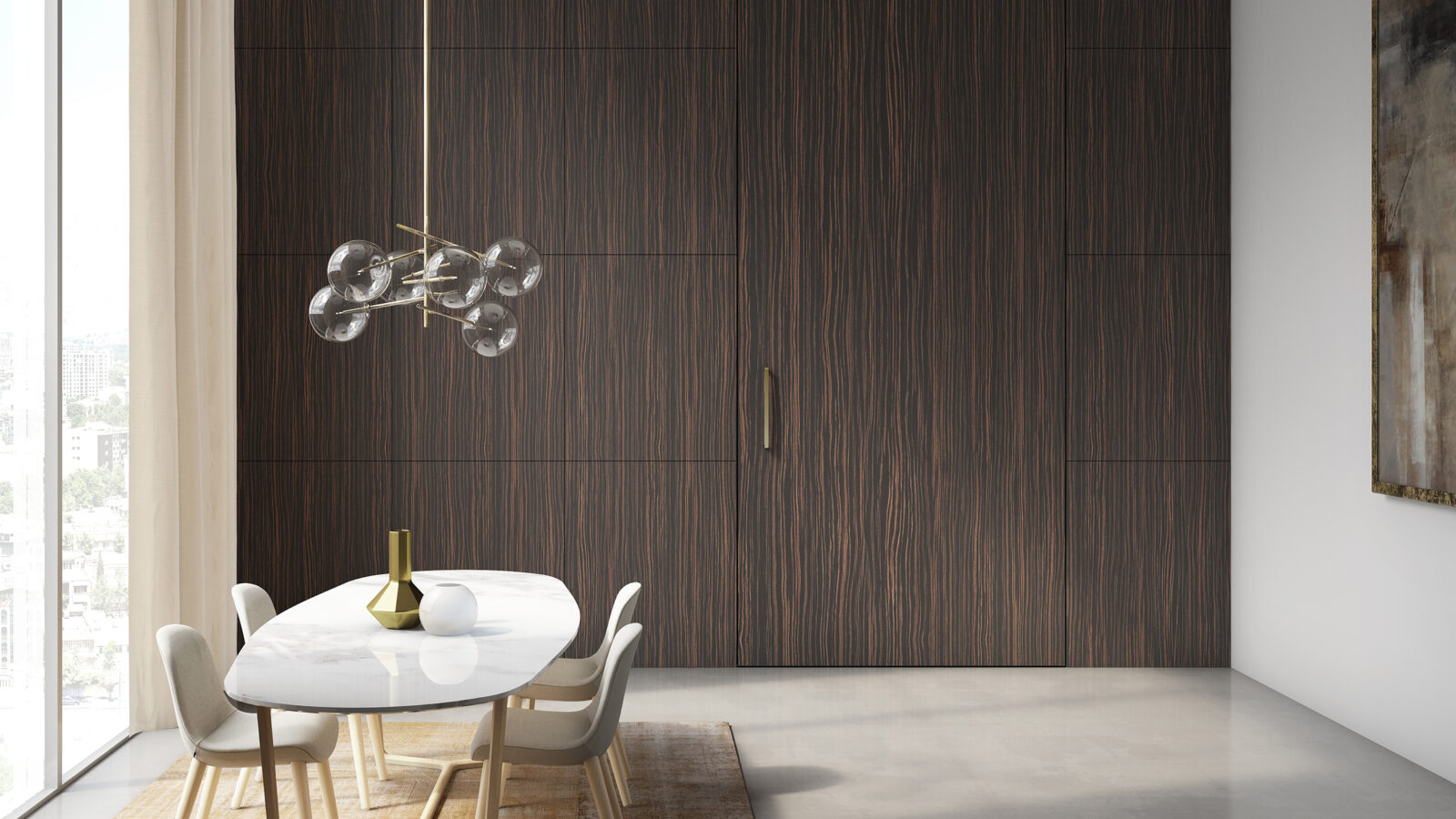
Relate FAQ
What makes an invisible door different from a regular door?
Invisible doors differ from traditional doors because they are concealed within the wall or structure, making them nearly impossible to detect when closed. To remain unobtrusive, these doors use clever design techniques such as hidden hinges, magnetic systems, and seamless finishes.
Can invisible doors be used in both residential and commercial spaces?
Invisible doors are versatile and can be installed in residential and commercial spaces. They are especially popular in high-end homes, offices, and art galleries where aesthetics and design are key.
What types of materials are used for invisible doors?
Invisible doors can be made from various materials, including wood, metal, glass, and acrylic. The material is usually chosen to match the surrounding wall or design, ensuring a flawless, integrated look.
Can an invisible door be customized?
Invisible doors are highly customizable. Depending on the space's design, they can be integrated with custom finishes, colors, and textures to blend seamlessly with the wall, or designed with hidden handles or automatic opening systems for added convenience.
How do invisible doors function without visible handles?
Invisible doors use innovative mechanisms like touch-sensitive sensors or hidden magnetic handles that activate when pressure is applied. These designs eliminate the need for visible handles, making the door truly "invisible."
What are the benefits of an invisible door?
The main benefits of invisible doors include their sleek and modern appearance, space-saving qualities, and ability to maintain the aesthetic flow of a room. They are ideal for creating hidden rooms, secret passages, or keeping clean lines in minimalist interiors.
Can invisible doors be soundproof?
Yes, many invisible doors are designed to offer soundproofing capabilities. They can be fitted with specialized insulation materials or solid construction to block noise, making them ideal for creating private or quiet spaces.
